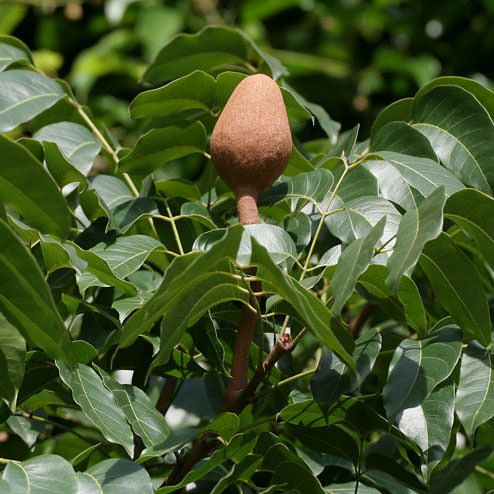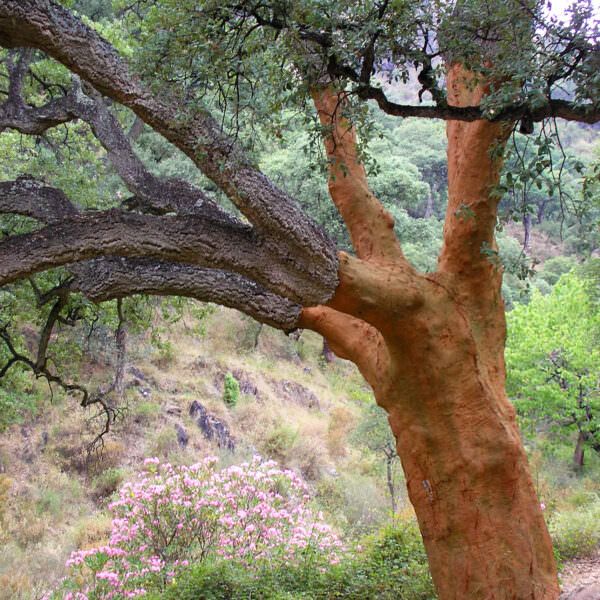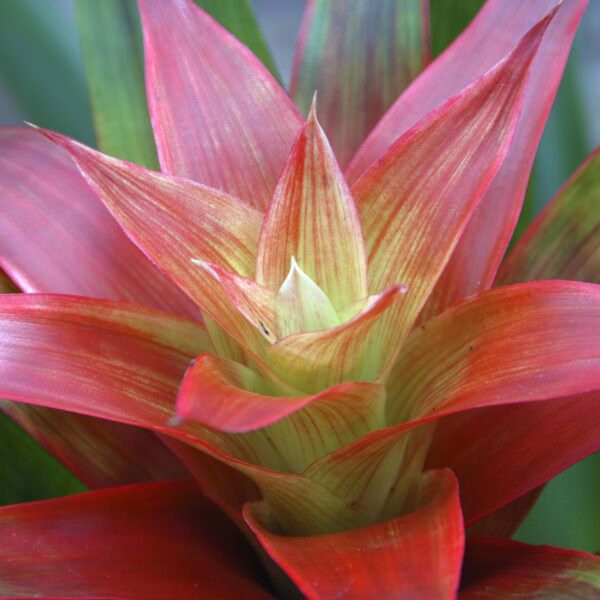We're All In
Together, we're building a future where people and nature thrive. Sign up today and join our movement...
Botany
The sapodilla tree is a slow-growing evergreen that can reach heights of 100 feet. Strong and wind-resistant, it maintains an extensive root system. Within the tree’s bark is the white, gummy sap the tree is famous for, called chicle. The glossy green leaves are clustered in spirals at the tip of forked twigs. Sapodilla flowers are small, bell shaped and cream colored. The fruit is shaped like an egg with rough, brown skin when ripe, which protects the grainy yellow fruit inside.
The ripe sapodilla fruit is soft, sweet and juicy with a similar taste to a pear. The fruit is tremendously popular among Central Americans and a favorite of rainforest mammals like howler monkeys, kinkajous, tapirs, peccaries, and bats. Bats, like the yellow epauletted bat and the Seba’s short-tailed bat, pollinate the tree while drinking nectar produced by its flowers. They also carry off the delicious fruit, eventually dropping seeds that may grow into new trees.
Habitat
The sapodilla tree is native to southern Mexico, Belize and northeastern Guatemala. It also grows in the West Indies and the Old World tropics, where it was introduced for cultivation centuries ago.
Significance
The sapodilla tree supplies the building blocks for a number of products utilized by humans. Long ago, the Mayas and Aztecs would boil its ‘chicle’ sap, mold it into thick blocks and cut them into small pieces to chew. They were making the first chewing gum! In 1866, former Mexican president General Santa Anna brought a sample of chicle sap to a New York businessman named Thomas Adams. Adams decided to mix sugar with the chicle, creating a new kind of chewing gum. Producing chicle is a labor-intensive process. A worker, called a chiclero, must hand harvest the sap from individual trees by climbing up to 50 feet in order to make zigzag cuts down the tree, which releases the sap that is then collected in containers.
The sapodilla is also prized for its fruit, considered one of the best fruits in Central America. It can be eaten raw or made into jam, custard, ice cream, and sherbet. The fruit and leaves are used in traditional medicine to treat diarrhea, coughs and colds. The sapodilla wood is a deep red color, strong, and durable—it was used for lintels and beams in Maya temples, which remain intact among the ruins of the Maya buildings. Today, the timber is used for railway crossties, floorings, tool handles, and furniture; natural chicle chewing gum represents a very small portion of the chewing gum market, because of its labor intensive collection. Instead, most chewing gums are derived from other natural latex, or are made with petroleum-based synthetic gum. In Mexico, it is illegal to harvest the sapodilla tree because of its value as a chicle source.
Did You Know
Natural chicle chewing gum represents a very small portion of the chewing gum market, because of its labor intensive collection. Instead, most chewing gums are derived from other natural latex, or are made with petroleum-based synthetic gum. In Mexico, it is illegal to harvest the sapodilla tree because of its value as a chicle source.
What We're Doing
In 1999, the Rainforest Alliance certified chicle production in the Yucatán as its first non-timber forest product, helping to relieve pressure on forests while still allowing the local people to earn a living. and cabinets.
Sources
- Jukofsky, Diane. Encyclopedia of Rainforests. Connecticut: Oryx Press, 2002
- Bats, Plants and People
- World Agroforestry Centre
- Purdue University Center for New Crops & Plants Products
- California Rare Fruit Growers
- Small photo by Asit K. Ghosh Thaumaturgist



